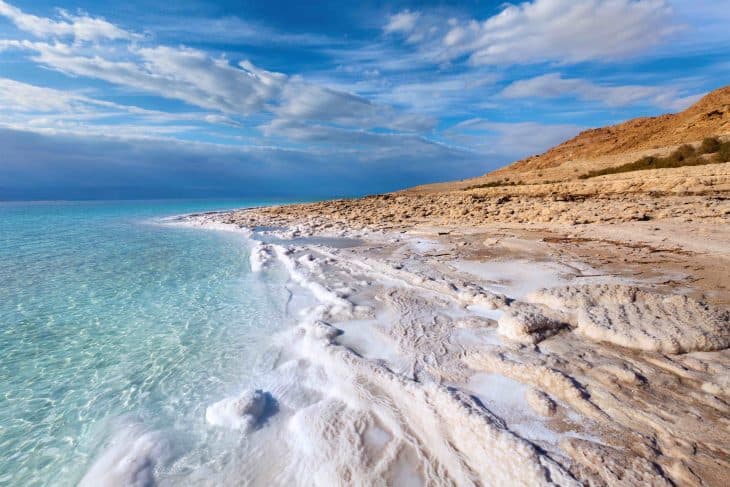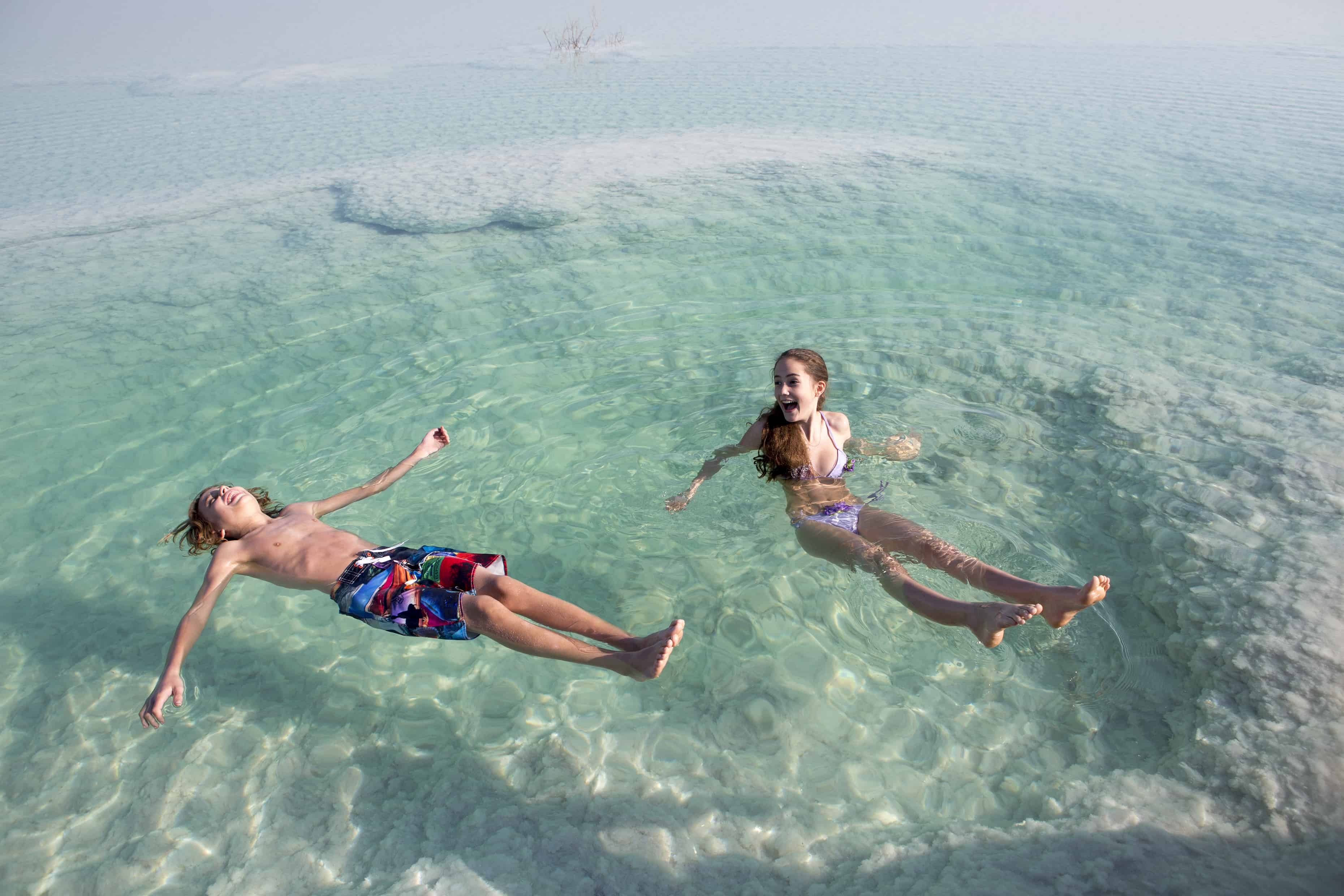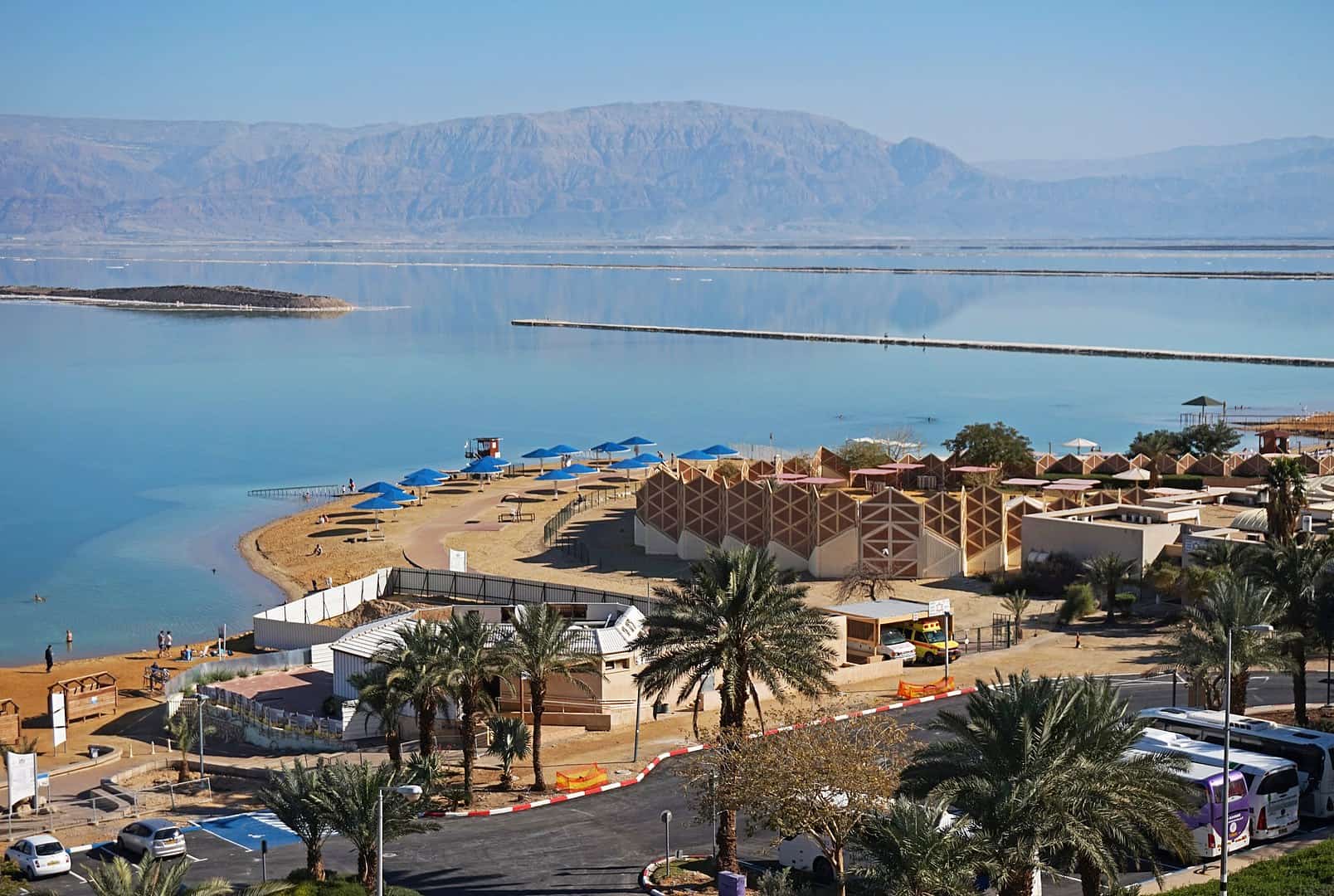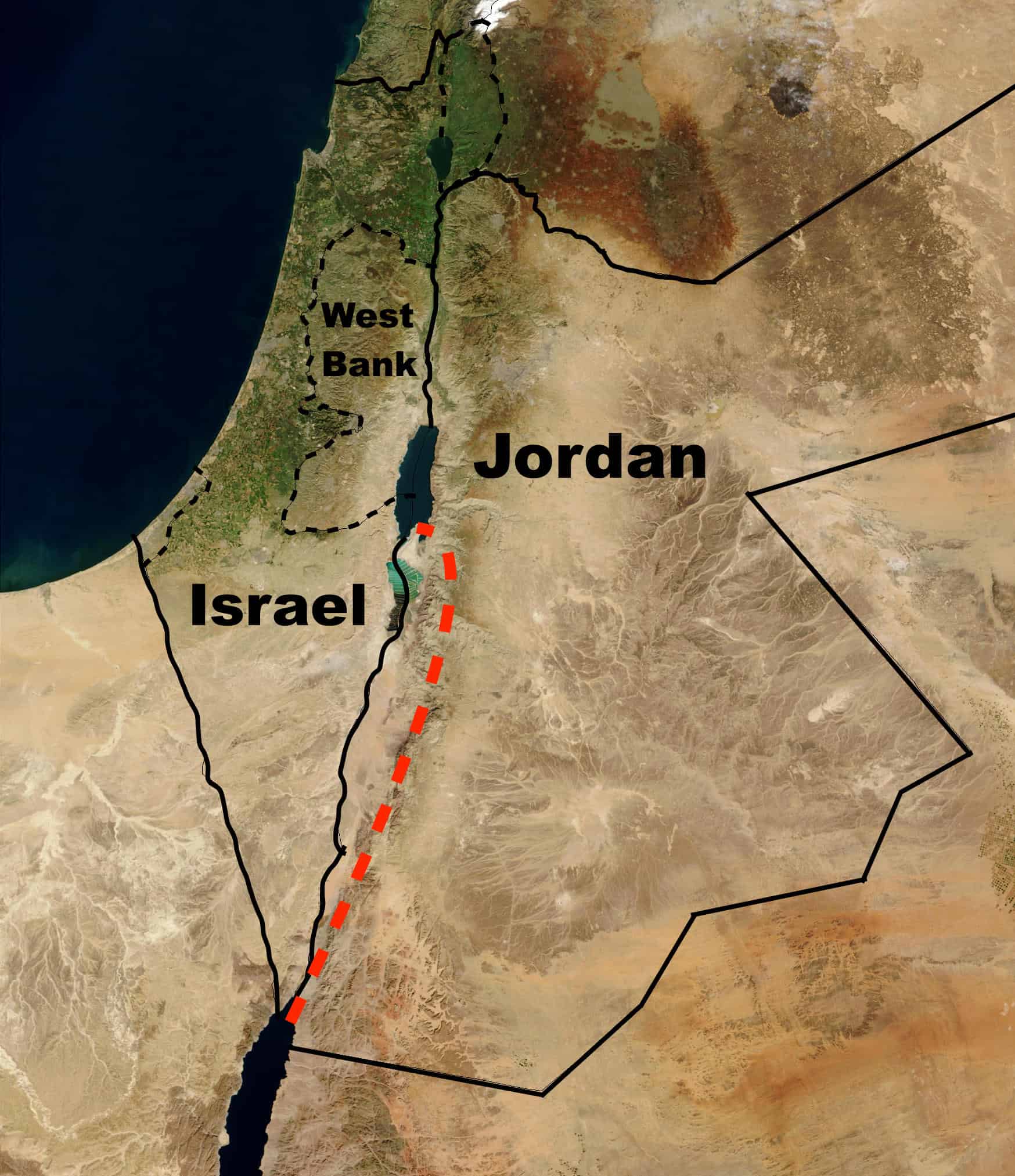
Normally, you’d expect something with the name Dead Sea as a place to avoid. Something like Chernobyl, even. However, once you learn more about it and fill your mind with all sorts of Dead Sea facts, you will soon discover that it is truly one of the most fascinating places on Earth! This place is more than just a tourist attraction. People seeking relief from chronic skin, respiratory, and joint problems benefit from the Dead Sea’s unique sun and mineral qualities. Did you know that people have frequented the Dead Sea as far back as ancient times? That’s how long it’s been there!
It was even used as a refuge for King David based on a story in the Bible. Its importance has only grown with the coming of modernity with all the changes it brings. Now, there are numerous resorts, spas, and hotels near the Dead Sea. If you want to be like David, and go on a vacation there, don’t be surprised if you begin to float like a boat! People float in the Dead Sea for a variety of reasons. The Dead Sea’s water is saltier than any other body of water on the planet. The amount of salt in the water exceeds 34%. The water is thicker than normal freshwater due to the exceptionally high concentration of dissolved mineral salts in it.
Also, don’t ever open your eyes underwater because you’ll almost certainly have to rush out to rinse them. You can expect to have red eyes for the rest of the day! Did these bits and pieces of trivia make you want to know more about the Dead Sea? Then, you know what to do! Check out our collection of 50 unique and interesting Dead Sea facts below.
- The Dead Sea covers an area of 605 km² or 233.6 sq. mi.
- It also has a total volume of 114 km³ of water.
- At its widest point, the Dead Sea measures 15 km from east to west.
- At its longest point, the Dead Sea measures 50 km from north to south.
- On average, the Dead Sea has a depth of 199 meters.
- Scientists remain unsure if the region formed as an extension of the Red Sea or East Africa’s Great Rift Valley.
- The Dead Sea once formed the Sedom Lagoon around 3.7 million years ago.
- At the time, it extended as far north as the Sea of Galilee, to 50 km south of the current southern shoreline of the Dead Sea.
- Salt began building up around this time, forming deposits of up to 2.3 km thick.
- The lagoon became cut off from the Mediterranean Sea around 2 million years ago.
- As the new lake shrank, it left behind the salt now visible around Mount Sedom.
- It’s also known by the names Sea of Death, Sea of Salt, Sea of the Arabah, and the Primordial Sea, among many others.
- The lake, from 80,000 to 14,000 years ago, was then called Lake Lisan.
- As Lake Lisan shrank into the Dead Sea, it left behind salt domes around the Lisan Peninsula.
- The Dead Sea of today dates back to only 14,000 years ago.
- The Jordan River supplies the Dead Sea with water.
- The small pebbles and asphalt from the lake were used for Ancient Egyptian mummification.
- Herod the Great of Judea built a health resort for his personal use on the Dead Sea.
- With an elevation of 431 meters below sea level, the Dead Sea is one of the lowest places on Earth.
- No water flows out of the Dead Sea.
The Dead Sea makes up one of the saltiest bodies of water in the world.
It’s currently ranked seventh, with an estimated 337 grams of salt for every kilogram of water in the sea. This actually makes the Dead Sea about 10 times as salty as the ocean and gives it a density of 1.24 kilograms for every liter. That density means people and animals don’t even need to exert any effort to float when swimming in the Dead Sea. They’ll just float by default from how dense the salt makes the water.

It used to be a part of the Mediterranean Sea.
Though already established as a lake, it used to be a part of the Mediterranean Sea. It’s all thanks to the African and Arabian tectonic plates movement that created the wondrous Dead Sea 3 million years ago. The lands surrounding the saltwater lake are Israel, Jordan, and the West Bank.
The amount of salt in the water varies with depth.
The upper 35 meters of the sea actually have a salinity level of 30%, which steadily rises the deeper the water becomes. At the lowest levels of the Dead Sea, the water becomes completely saturated with salt. So much so, that it actually crystallizes on the seabed, forming sheets and blocks of salt on top of the rock.
The Dead Sea is divided into two parts: the Northern Basin and the Southern Basin.
The Dead Sea’s graben, an elongated fault block, is composed of two basins. The Northern Basin is a major part of the lake where tourists flock and is 300 meters deep. Meanwhile, the Southern Basin was “formed during the first stage of the formation of the Dead Sea fault.”
The Dead Sea continues to shrink today.
A map by Springer Nature shows how the Northern Basin is shrinking and the former nonexistent Southern Basin is growing in size. The BBC reported that the Dead Sea’s surface level is “shrinking at an alarming rate… dropping more than a meter a year.” Israel’s Environmental Protection Ministry senior director Galit Cohen believes it’s a geopolitical problem.
The geography surrounding it is becoming more dangerous.
On average, the Dead Sea loses one meter of water every year which affects the sea’s surrounding geography. In particular, sinkholes have opened up along the western shoreline after freshwater in the water table fills spaces once filled by the Dead Sea. The freshwater dissolves salt deposits in the ground, leaving unstable open spaces behind which then collapse into sinkholes.
The Dead Sea has several names.
The name Dead Sea only actually came into use in modern times, with ancient literature such as the Bible never actually using it. The Hebrews have many names for the sea, such as the Sea of Salt, the Sea of the Arabah, and the Eastern Sea. That said, they also provided the root for the sea’s modern name, Sea of Death, in works of prose. This eventually led the Arabs to start calling it by its modern name, but they also had their own names for the sea. One of those includes the Sea of Zo’ar, after an abandoned town that once stood on its shores in ancient times.
The surrounding area has a harsh climate.
The Dead Sea and its surrounding lands usually have clear skies, low humidity, and low rainfall all year round. In fact, on average, barely 2 inches of rainfall take place, while the average temperatures never drop below 32°C in the summer. Temperatures do fall in winter, though, down to a minimum of 20°C. The low elevation of the region also makes for a thicker atmosphere, which actually reduces the amount of ultraviolet radiation reaching the ground. It also allows for a higher percentage of oxygen – up to 5%, which is more than the atmosphere’s usual average oxygen content.

High concentration of chloride and bromide can be found in the Dead Sea.
The abundance of beneficial minerals in its waters made the Dead Sea nature’s ultimate spa. While the lake is 32% salt minerals, a high concentration of electrolytes, such as chloride and bromide, can be found out of the 26 beneficial minerals in its waters. Chloride keeps the cells in the body balanced, whereas bromide is a natural sedative.
Life can sometimes develop in the Dead Sea.
Normally the amount of salt in the Dead Sea means no life can survive in its waters, not just plants or animals, but even bacteria. In the rare times that the region experiences heavy rainfall, the sea’s salt levels can drop below 30%. This allows life to actually thrive in the sea. For example, the wet winter of 1980 allowed red algae to bloom in the Dead Sea’s waters. So much so that they actually turned the entire sea into red from the sheer amount of algae present. However, moments like these don’t usually last very long because the water in it evaporates and salt levels rise again. And as they rise, whatever life that managed to briefly flourish in the Dead Sea, dies.
Life thrives on lands surrounding the Dead Sea, though.
Despite the harsh desert conditions, many different animal species live in the lands surrounding the Dead Sea. Common sights include foxes, hyraxes, ibexes, jackals, rabbits, and even leopards among others. Hundreds of bird species also live in the surrounding area, all of which have led both Jordan and Israel to establish nature reserves around the Dead Sea.
The Dead Sea features in several Biblical events.
Even before the Israelites left Egypt in the Exodus, the Bible recorded people living in caves around the Dead Sea. Jericho also lies just northwest of the Dead Sea, while the infamous cities of Sodom and Gomorra traditionally stood on its southeastern shores. Meanwhile, King Saul of Israel once managed to avoid getting captured by his enemies by hiding in the nearby oasis of Ein Gedi.
It remained important during Greco-Roman times.
Ships regularly crossed its waters in Greco-Roman times, with the Dead Sea forming a crossroads of trade routes across the region. Salt made up the primary commodity traded around the sea, along with agricultural goods from farms along the Jordan River.
Herod the Great of Judea built many palaces on the Dead Sea’s western shore, along with several fortresses. One of them, Masada, even went down in history as the place where the Jewish zealots made their last stand during the Great Jewish Revolt of the 1st Century AD. Trapped by the Roman Army, the zealots chose to commit mass suicide in the face of defeat.
Cleopatra VII used to bathe at the Dead Sea.
Cleopatra VII had Roman generals for lovers, therefore, sparing no expense in making sure she stays on top of fashion and beauty. This included a trip to the world’s most natural spa. She willingly traveled for more than 400 miles just to exfoliate, bathe, and rejuvenate in its mineral-rich waters and highly beneficial black mud. Some even say that through Marc Antony, she secured “exclusive rights over the Dead Sea region.”
Archaeologists discovered the Dead Sea Scrolls in the region during the early 20th century.
Bedouin shepherds found the first seven scrolls stored in jars at Qumran in 1946, which their tribe kept for a time. Eventually, they sold them to an antiquities dealer at Bethlehem, which brought them to academic attention in 1947. Proper excavations at Qumran began in 1948, and continued until 1956, finding additional relics in 11 different caves. The discovery of a twelfth cave in 2017 led to a new excavation, which was cut short after they discovered the cave looted by robbers. However, a 2021 excavation found new relics, including a child’s grave from 6000 years ago and even a hoard of coins.

The Dead Sea Scrolls make up the second-oldest Biblical manuscripts in the world.
In fact, only 40% of the Dead Sea scrolls’ texts went on to become part of the Bible as we know it. Another 30% include what historians call apocryphal texts, such as the Book of Enoch, the Book of Jubilees, the Book of Tobit, and the Wisdom of Sirach.
The scrolls also include four new psalms previously unknown to Biblical scholars. Other contents of the scrolls include scholarly research on various Jewish teachings. These include the Community Rule, the Habakkuk Commentary, the Rule of the Blessing, and the War Scroll.
The origin of the Dead Sea Scrolls remains in question to this day.
The main theory attributes the Dead Sea Scrolls to the Essenes, a Jewish sect similar to the Pharisees, which dates back to the 2nd century BC. Another theory attributes the scrolls to an unknown Jewish sect. Either way, supporters of both theories think the scholars hid the scrolls away during the Great Jewish Revolt to prevent the Romans from destroying them.
Another theory that goes back to Jesuit scholars in the 1960s attributes the scrolls to early Christians. Jewish scholars contest this theory, but archaeologists concede the possibility exists. In particular, they point out how, at the time, little difference existed between Judaism and Christianity. In fact, the Romans treated Jews and Christians equally, and many early Christians started out as Jews. Not just Jesus and His apostles, but even Saint Paul among others.
Pockets of freshwater were found at the Dead Sea.
Though the biblical prophet Ezekiel didn’t specifically mention which body of water, people believe that the passage meant the Dead Sea. It reads, “This water flows toward the eastern region, goes down into the valley, and enters the sea. When it reaches the sea, its waters are healed.” The Ben-Gurion University of the Negev in Israel released a 2011 study wherein freshwater springs and micro-organisms were found at the Dead Sea. The prophecy may soon be coming to fruition.
The world’s lowest roads run along the Dead Sea.
There’s Israel’s Highway 90, running along the western shores of the Dead Sea. It starts out further north at Metula, along the border with Lebanon, and passes along the western shores of the Sea of Galilee. It then runs through the Jordan Valley before passing by the Dead Sea, then south to the Egyptian border, making up a total distance of 480 km. There’s also Jordan’s Highway 65, running parallel to the eastern shores of the Dead Sea. It starts out further south, at Aqaba on the Gulf of Aqaba, then past the Dead Sea and through the Jordan River before ending at Irbid.
Tourism flourishes around the Dead Sea.
Israel alone has 15 hotels on the western shores of the Dead Sea, the oldest of which go back to the 1960s. Jordan has nine other hotels on the eastern shores of the Dead Sea, along with the King Hussein Bin Talal Convention Center.

Health tourists especially flock to the Dead Sea.
The tradition goes back to ancient times, with people visiting the Dead Sea for therapeutic relief for various ailments. Today, psoriasis patients regularly visit the Dead Sea, and swim in its salty waters to give some sort of relief to their skin. Rhinosinusitis patients also visit the Dead Sea to treat and irrigate purulent secretions from the nasal cavity.
Herod the Great built a spa on its shores.
Masada National Park is located at the edge of the Judean desert in Israel. The UNESCO World Heritage Site we know today used to be a fortress built by King Herod. The king loved staying at the winter palace complex he built which had the Roman-style public bath called caldarium.
The black mud is highly beneficial to the skin and body.
Although it’s the minerals in the waters that greatly relieve arthritis and soothe back pain, the mud from the Dead Sea is highly beneficial too! Skincare connoisseurs, look no further than the black mud. This Dead Sea exclusive can exfoliate, detoxify, and nourish the skin. A black mud facial can also help tighten pores, treat acne, reduce skin impurities, and improve psoriasis. Best of all, it’s free!
A cosmetic company sells soap made from black mud.
It’s not strange to see tourists on the shore rubbing black mud all over their bodies since the Dead Sea site is nature’s free spa, after all. For less than $150, you can purchase black mud soap, black mud shampoo, and black mud body wrap. To people who can’t travel yet, KEDMA Cosmetics makes it accessible to experience the full black mud experience without paying for the airfare.
Oil leaks from under the Dead Sea.
This takes the form of asphalt which solidifies in the water to form loose pebbles or solid blocks on the seabed. Mining these asphalt deposits goes back to ancient times, leading the Greeks to give the Dead Sea the name of Lake Asphaltites.
Potash mining makes up the Dead Sea’s biggest industry.
Scientists first discovered the economic potential of the lake’s rich potassium chloride reserves in 1911. The British colonial government gave permission to develop them in 1929 with commercial operations beginning in 1931. In fact, fully half of Britain’s potash imports in WWII came from the Dead Sea area. After the war, both Israel and Jordan maintained the industry and even expanded them through the 1950s.
Both Israel and Jordan operate other chemical industries on the Dead Sea.
Starting in the 1950s, both Israel and Jordan expanded their operations to include harvesting salt from the Dead Sea. Other shared mineral harvests include bromide, while Israel also produces caustic soda and even magnesium from the Dead Sea.
Palestinians struggle to access the economic potential of the Dead Sea.
Technically, the West Bank gives Palestine an estimated 40 km of Dead Sea shoreline of their own. However, the Israeli occupation of the region has allowed the Israelis to deny Palestinians in the west to develop their part of the Dead Sea. In particular, the Israeli authorities block construction permits for tourism developments in the West Bank. A lack of foreign investment, in general, has also blocked Palestinian efforts to develop it.
Jordan and Israel both agree on the need to preserve the Dead Sea.
As early as 2009, both countries agreed to support a plan to pump seawater from the Red Sea to the Dead Sea. Part of the water would undergo desalination along the way, providing freshwater to Jordanian and Israeli communities nearby. The remaining saltwater would go into the Dead Sea and replenish it. Environmentalists have criticized the plan as ignorant of possible environmental effects on the Dead Sea. They instead suggest reducing the development of its shores and instead increase the water flow in the Jordan River.

Mark Twain didn’t like the lake.
The Adventures of Tom Sawyer author didn’t particularly enjoy his trip to the Dead Sea. In his travel book, Innocents Abroad, he described in Chapter 55 how dreary the lake seemed. Although Twain mentioned the phrase “scene that is depressing to the spirits” to describe the place, he still praised how the “waters are very clear.
Was this page helpful?
Our commitment to delivering trustworthy and engaging content is at the heart of what we do. Each fact on our site is contributed by real users like you, bringing a wealth of diverse insights and information. To ensure the highest standards of accuracy and reliability, our dedicated editors meticulously review each submission. This process guarantees that the facts we share are not only fascinating but also credible. Trust in our commitment to quality and authenticity as you explore and learn with us.
